ZHCSOF9B april 2022 – june 2023 TPS25981
PRODUCTION DATA
- 1
- 1 特性
- 2 应用
- 3 说明
- 4 Revision History
- 5 Device Comparison Table
- 6 Pin Configuration and Functions
- 7 Specifications
-
8 Detailed Description
- 8.1 Overview
- 8.2 Functional Block Diagram
- 8.3
Feature Description
- 8.3.1 Undervoltage Lockout (UVLO and UVP)
- 8.3.2 Overvoltage Lockout (OVLO)
- 8.3.3 Inrush Current, Overcurrent, and Short-Circuit Protection
- 8.3.4 Analog Load Current Monitor
- 8.3.5 Overtemperature Protection (OTP)
- 8.3.6 Fault Response and Indication (FLT)
- 8.3.7 Power Good Indication (PG)
- 8.3.8 Quick Output Discharge (QOD)
- 8.3.9 Reverse Current Blocking FET Driver
- 8.4 Device Functional Modes
- 9 Application and Implementation
- 10Power Supply Recommendations
- 11Layout
- 12Device and Documentation Support
- 13Mechanical, Packaging, and Orderable Information
7.8 Typical Characteristics
 Figure 7-2 ON-Resistance vs Supply Voltage (TA = 25°C)
Figure 7-2 ON-Resistance vs Supply Voltage (TA = 25°C) Figure 7-4 IN Quiescent Current vs Temperature
Figure 7-4 IN Quiescent Current vs Temperature Figure 7-6 IN Shutdown Current vs Temperature
Figure 7-6 IN Shutdown Current vs Temperature Figure 7-8 EN/UVLO Rising Threshold
vs Temperature
Figure 7-8 EN/UVLO Rising Threshold
vs Temperature Figure 7-10 EN/UVLO Shutdown Falling Threshold vs Temperature
Figure 7-10 EN/UVLO Shutdown Falling Threshold vs Temperature Figure 7-12 OVLO Falling Threshold vs Temperature
Figure 7-12 OVLO Falling Threshold vs Temperature Figure 7-14 Overcurrent Threshold Accuracy (Across Process, Voltage and Temperature)
Figure 7-14 Overcurrent Threshold Accuracy (Across Process, Voltage and Temperature) Figure 7-16 Fixed Fast-Trip Threshold vs Temperature
Figure 7-16 Fixed Fast-Trip Threshold vs Temperature Figure 7-18 ITIMER Discharge Differential Voltage Threshold vs Temperature
Figure 7-18 ITIMER Discharge Differential Voltage Threshold vs Temperature Figure 7-20 ITIMER Internal Pullup Voltage vs Temperature
Figure 7-20 ITIMER Internal Pullup Voltage vs Temperature Figure 7-22 PG Pin Voltage vs Temperature (VIN = 0 V)
Figure 7-22 PG Pin Voltage vs Temperature (VIN = 0 V) Figure 7-24 FLT Pin Leakage Current vs Temperature
Figure 7-24 FLT Pin Leakage Current vs Temperature Figure 7-26 Time to Thermal Shutdown During Inrush State
Figure 7-26 Time to Thermal Shutdown During Inrush State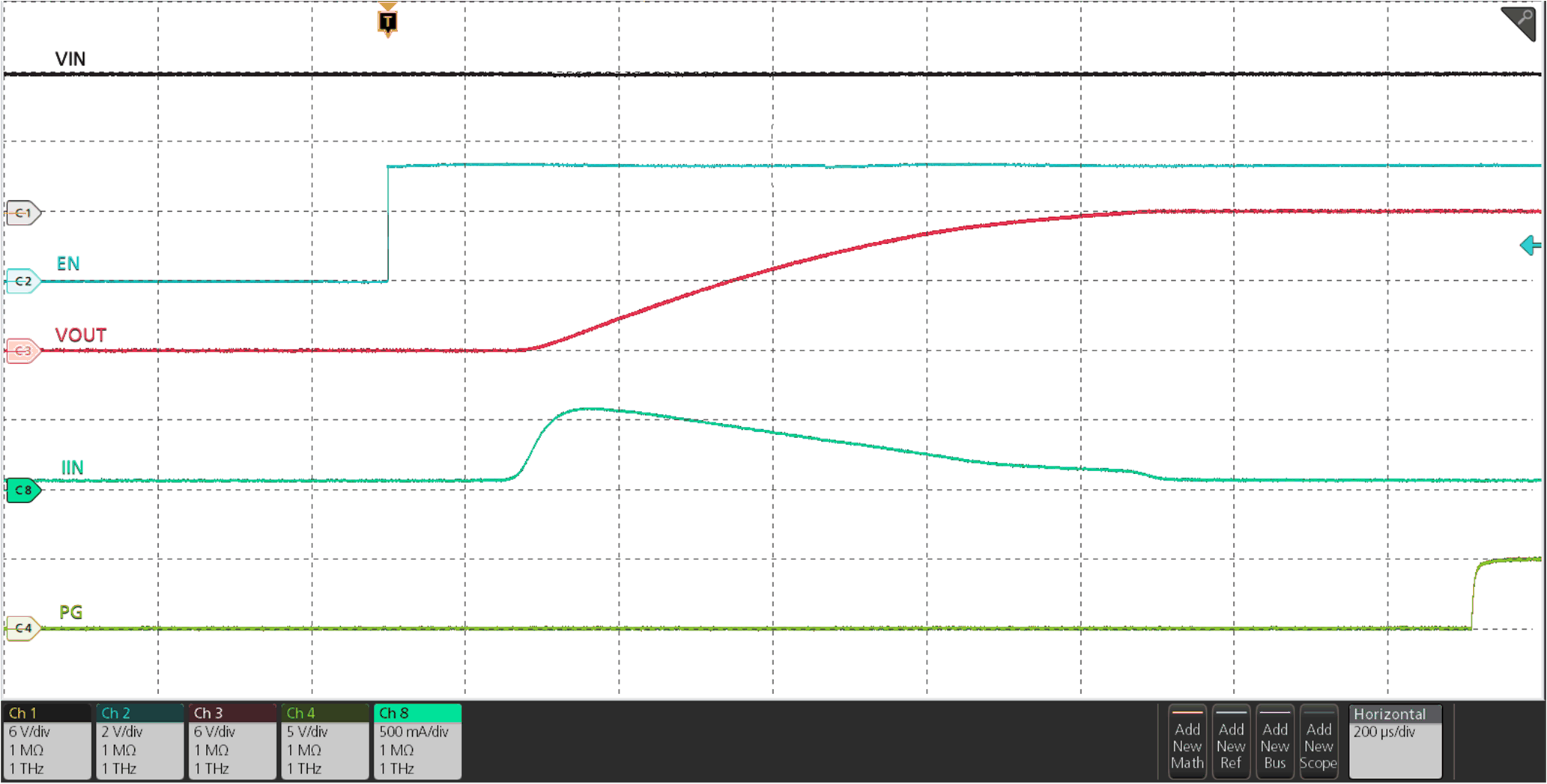
| VIN = 12 V, COUT = 10 μF, CdVdt = Open, VEN/UVLO stepped up to 3.3 V |
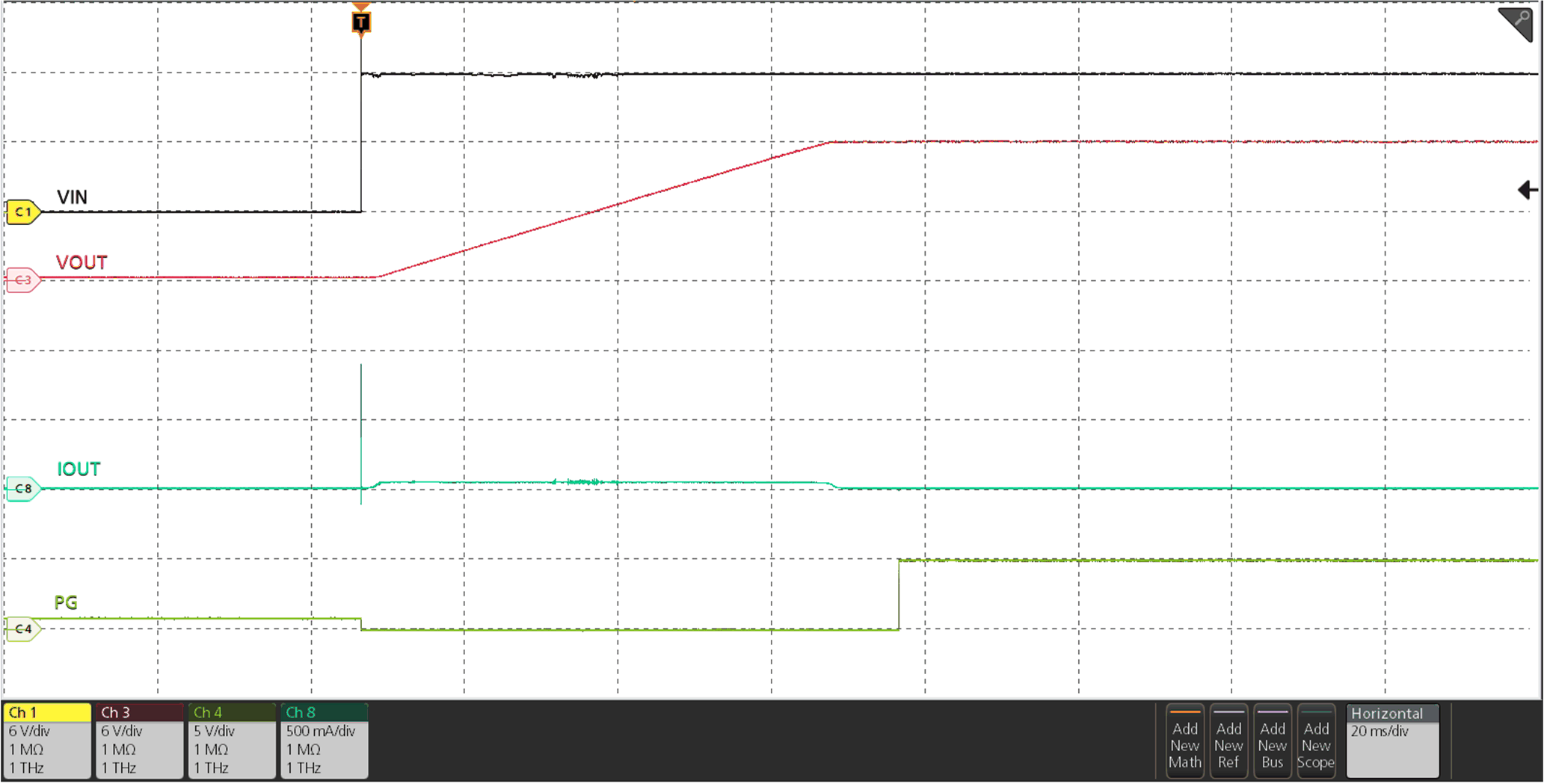
| COUT = 220 μF, CdVdt = 15 nF, EN/UVLO connected to IN through resistor ladder, 12 V hot-plugged to IN |
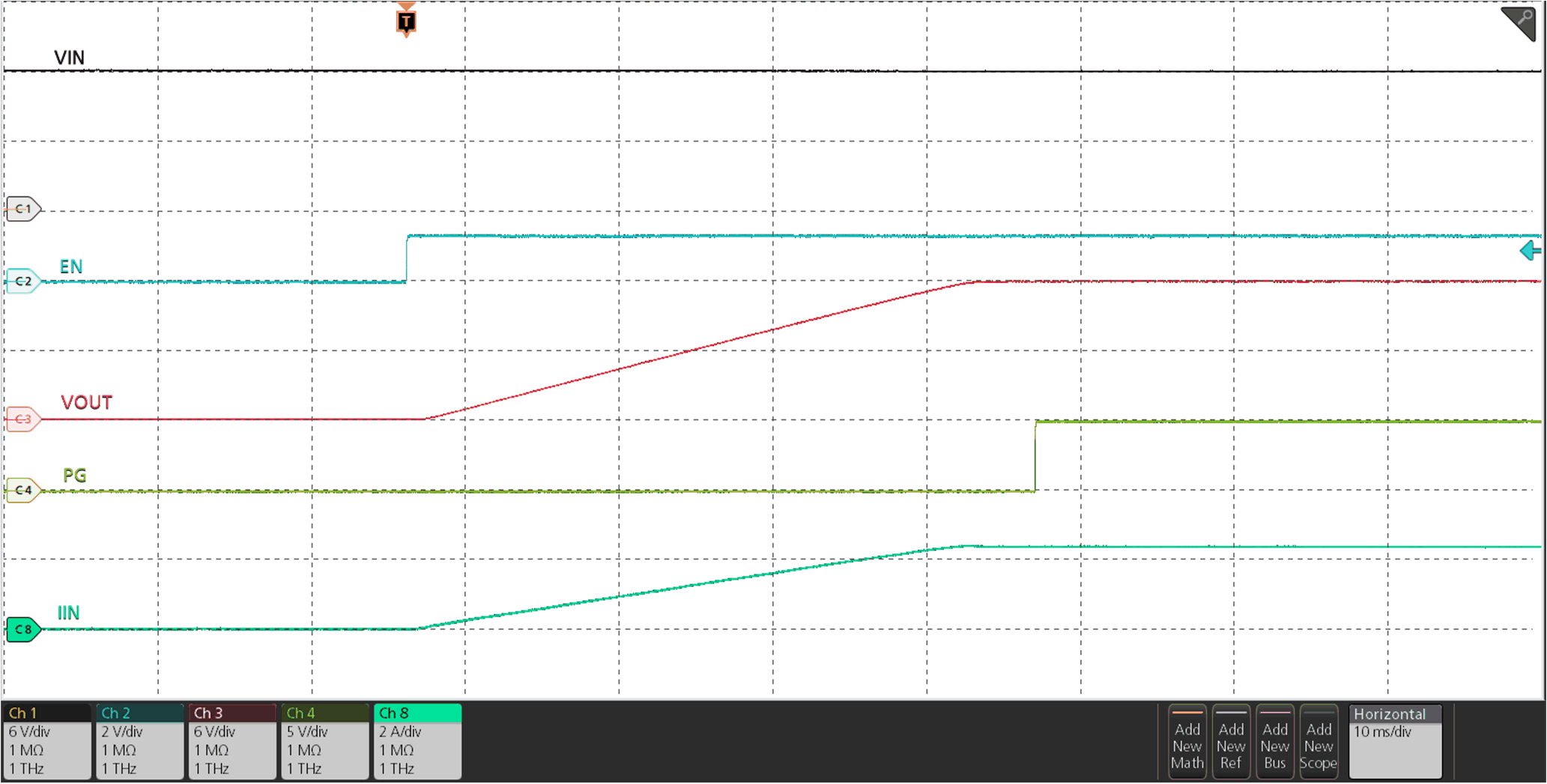
| VIN = 12 V, COUT = 220 μF, ROUT = 5 Ω, CdVdt = 3300 pF, VEN/UVLO stepped up to 1.4 V |
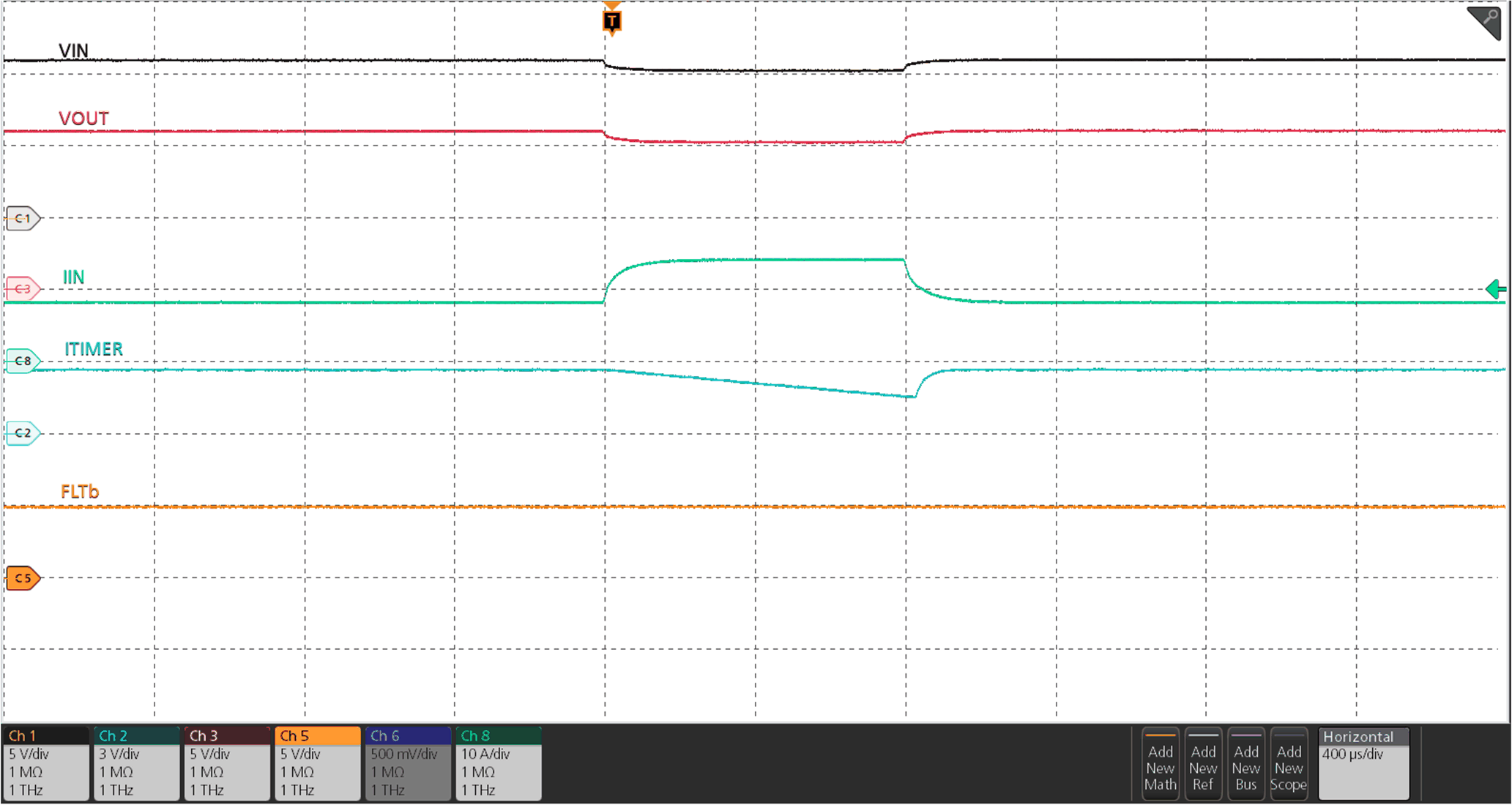
| VIN = 12 V, CITIMER = 1.5 nF, RILM = 649 Ω, IOUT ramped from 8 A → 14 A→ 8 A within 1 ms |
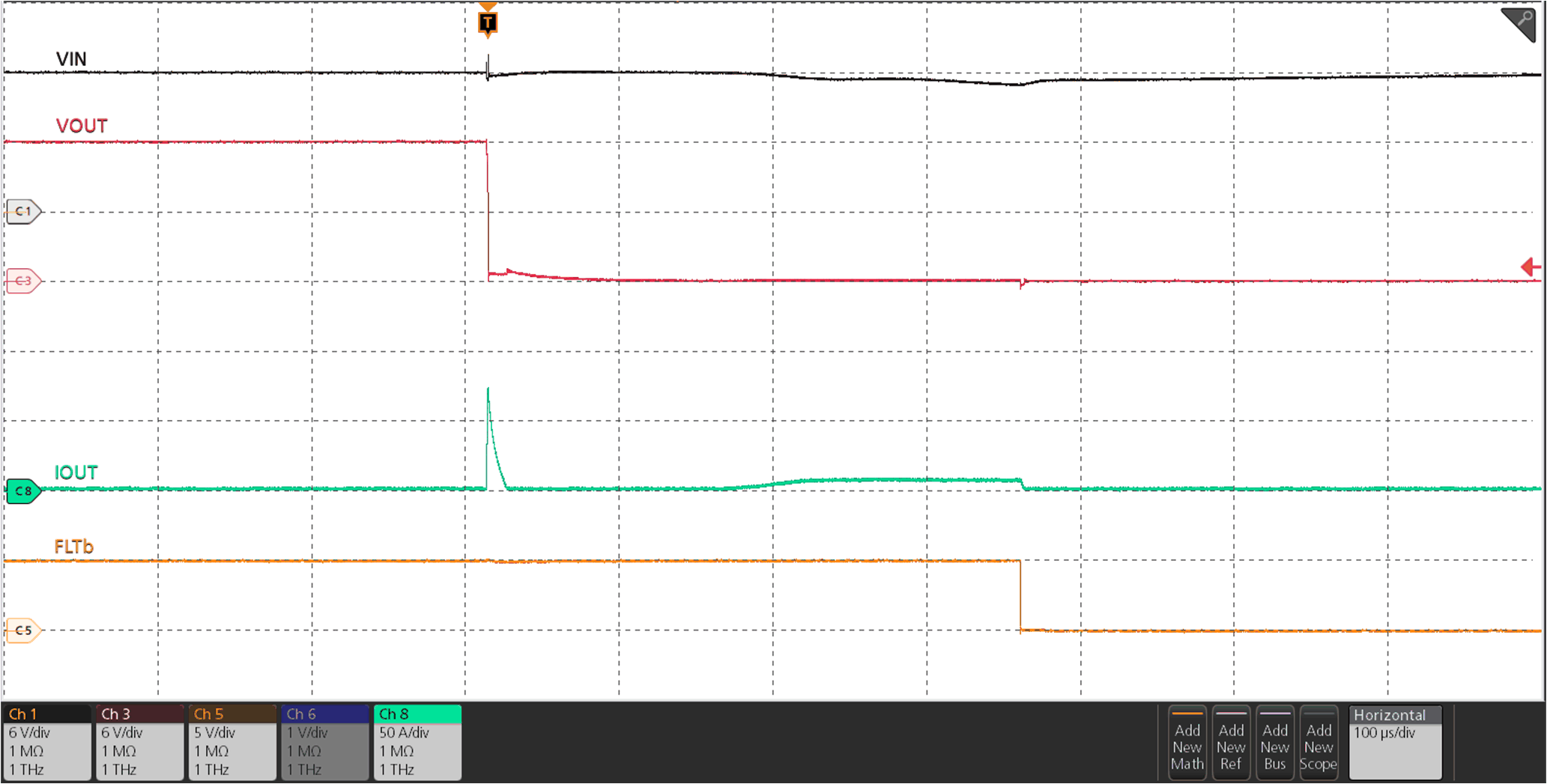
| VIN = 12 V, RILM = 649 Ω, OUT stepped from Open → Short-circuit to GND |
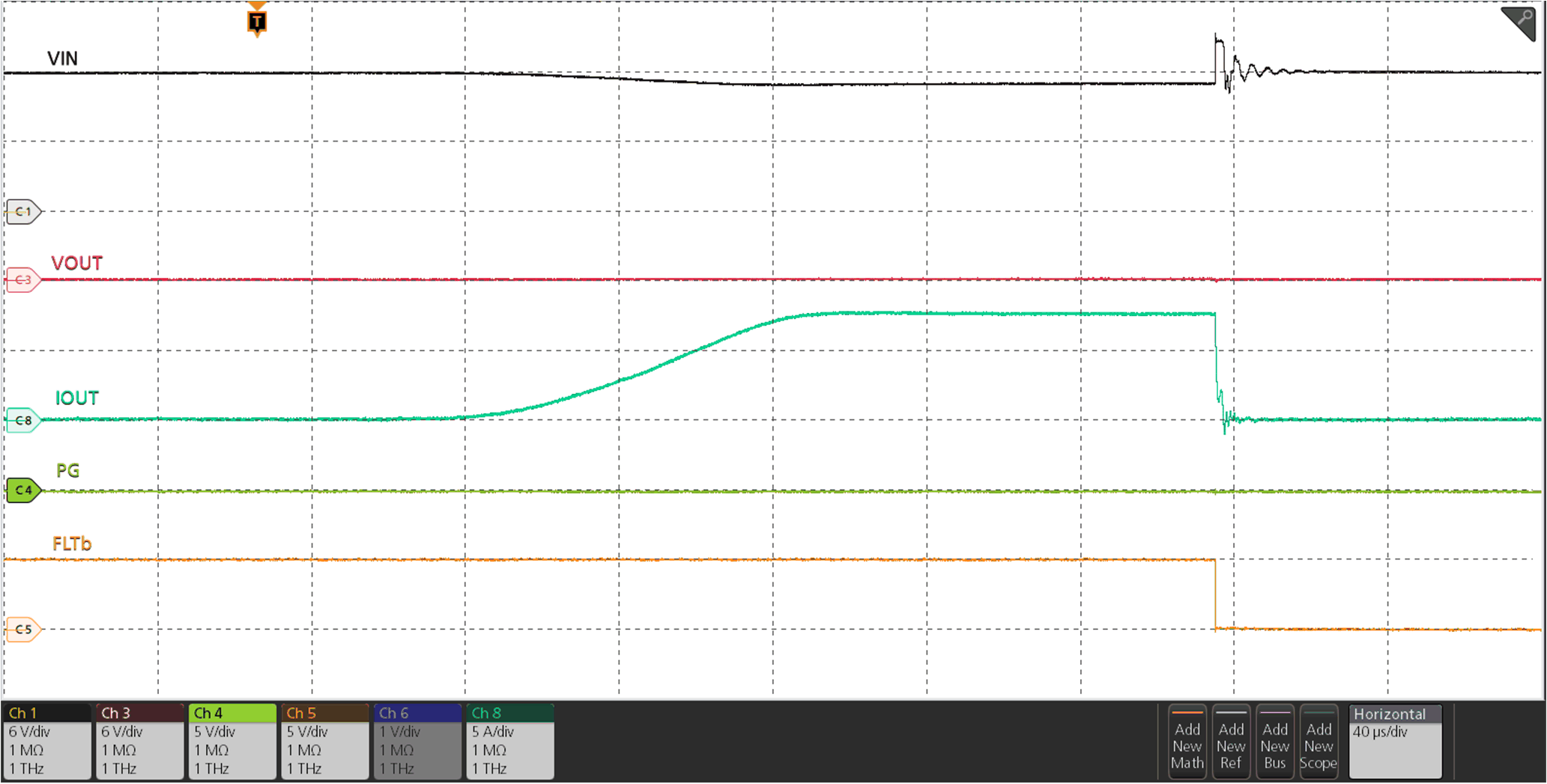
| VIN = 12 V, OUT short-circuit to GND, RILM = 649 Ω, VEN/UVLO stepped from 0 V to 3.3 V |
 Figure 7-3 ON-Resistance vs Temperature (IOUT = 3 A)
Figure 7-3 ON-Resistance vs Temperature (IOUT = 3 A) Figure 7-5 IN OFF State (UVLO) Current vs Temperature
Figure 7-5 IN OFF State (UVLO) Current vs Temperature Figure 7-7 IN Undervoltage Threshold vs Temperature
Figure 7-7 IN Undervoltage Threshold vs Temperature Figure 7-9 EN/UVLO Falling Threshold vs Temperature
Figure 7-9 EN/UVLO Falling Threshold vs Temperature Figure 7-11 OVLO Rising Threshold vs Temperature
Figure 7-11 OVLO Rising Threshold vs Temperature Figure 7-13 Overcurrent Threshold vs ILM Resistor
Figure 7-13 Overcurrent Threshold vs ILM Resistor Figure 7-15 Scalable Fast-Trip Threshold: Current Limit Threshold (ILIM) Ratio vs Temperature
Figure 7-15 Scalable Fast-Trip Threshold: Current Limit Threshold (ILIM) Ratio vs Temperature Figure 7-17 Analog Current Monitor Gain Accuracy
Figure 7-17 Analog Current Monitor Gain Accuracy Figure 7-19 ITIMER Discharge Current vs Temperature
Figure 7-19 ITIMER Discharge Current vs Temperature Figure 7-21 DVDT Charging Current vs Temperature
Figure 7-21 DVDT Charging Current vs Temperature Figure 7-23 FLT Pin Pulldown Resistance vs Temperature
Figure 7-23 FLT Pin Pulldown Resistance vs Temperature Figure 7-25 Quick Output Discharge Resistance vs Temperature
Figure 7-25 Quick Output Discharge Resistance vs Temperature Figure 7-27 Time to Thermal Shutdown
During Steady-State
Figure 7-27 Time to Thermal Shutdown
During Steady-State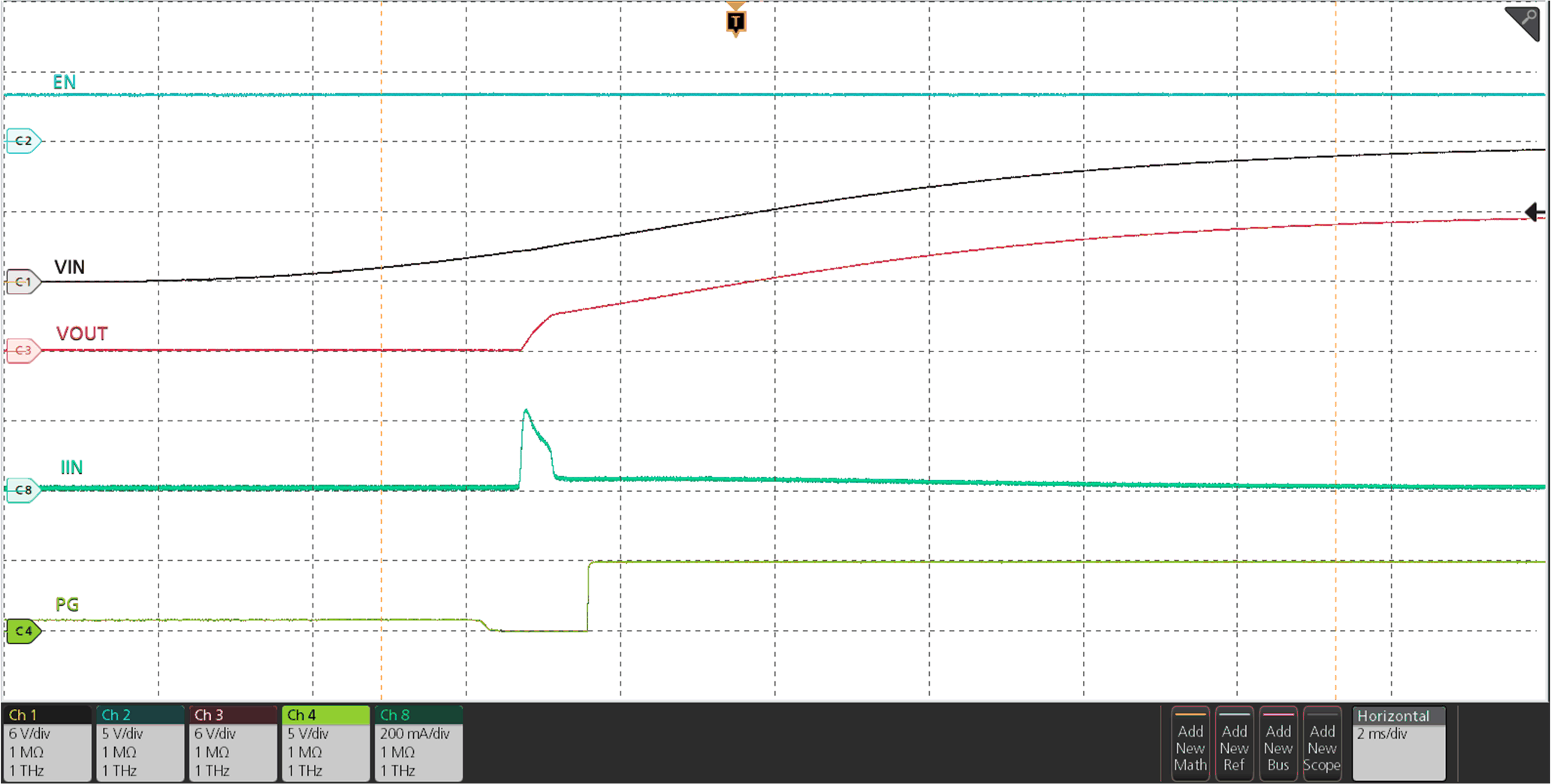
| VEN/UVLO = 3.3 V, COUT = 10 μF, CdVdt = Open, VIN ramped up to 12 V |
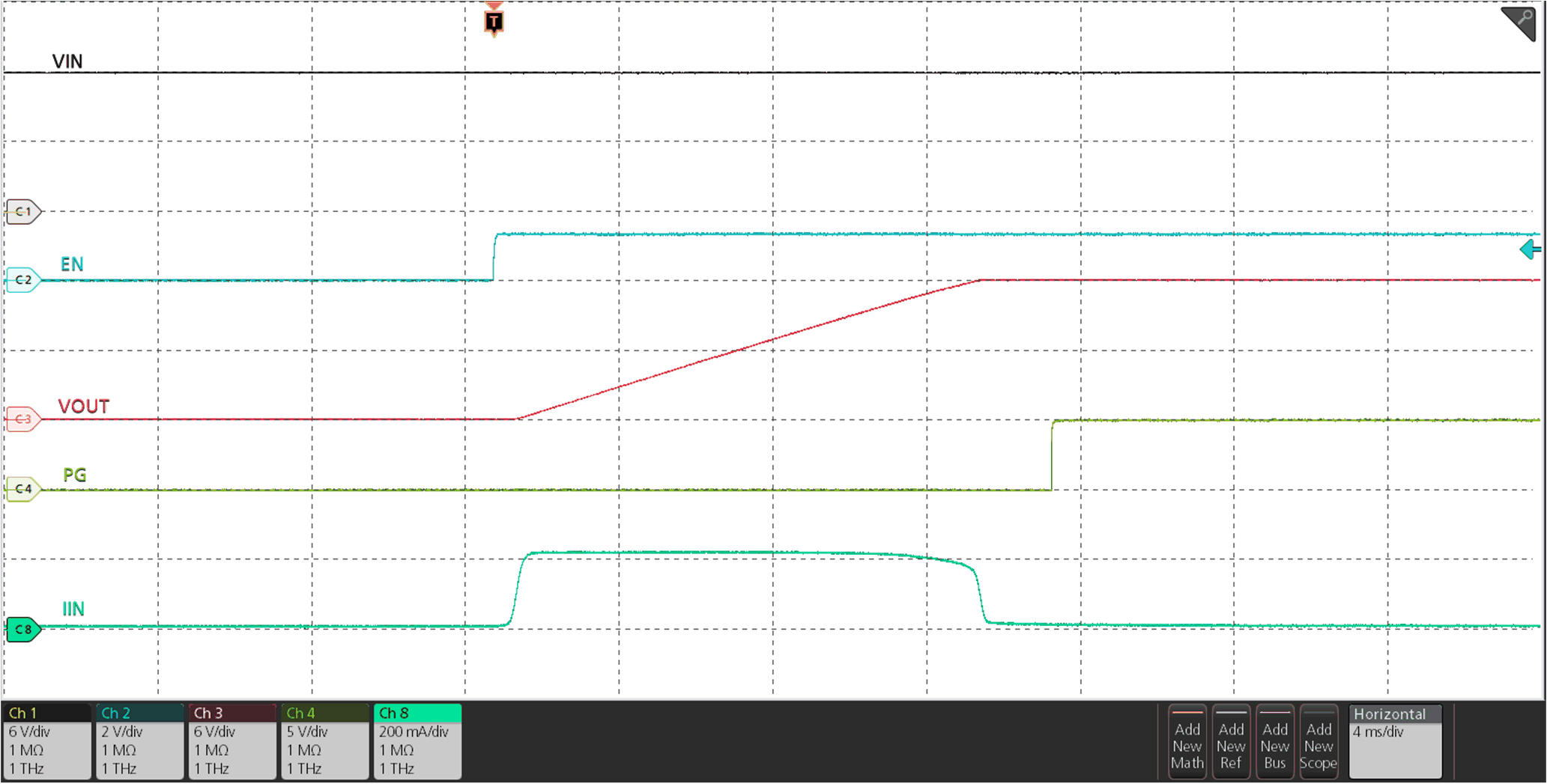
| VIN = 12 V, COUT = 220 μF, CdVdt = 3300 pF, VEN/UVLO stepped up to 1.4 V |
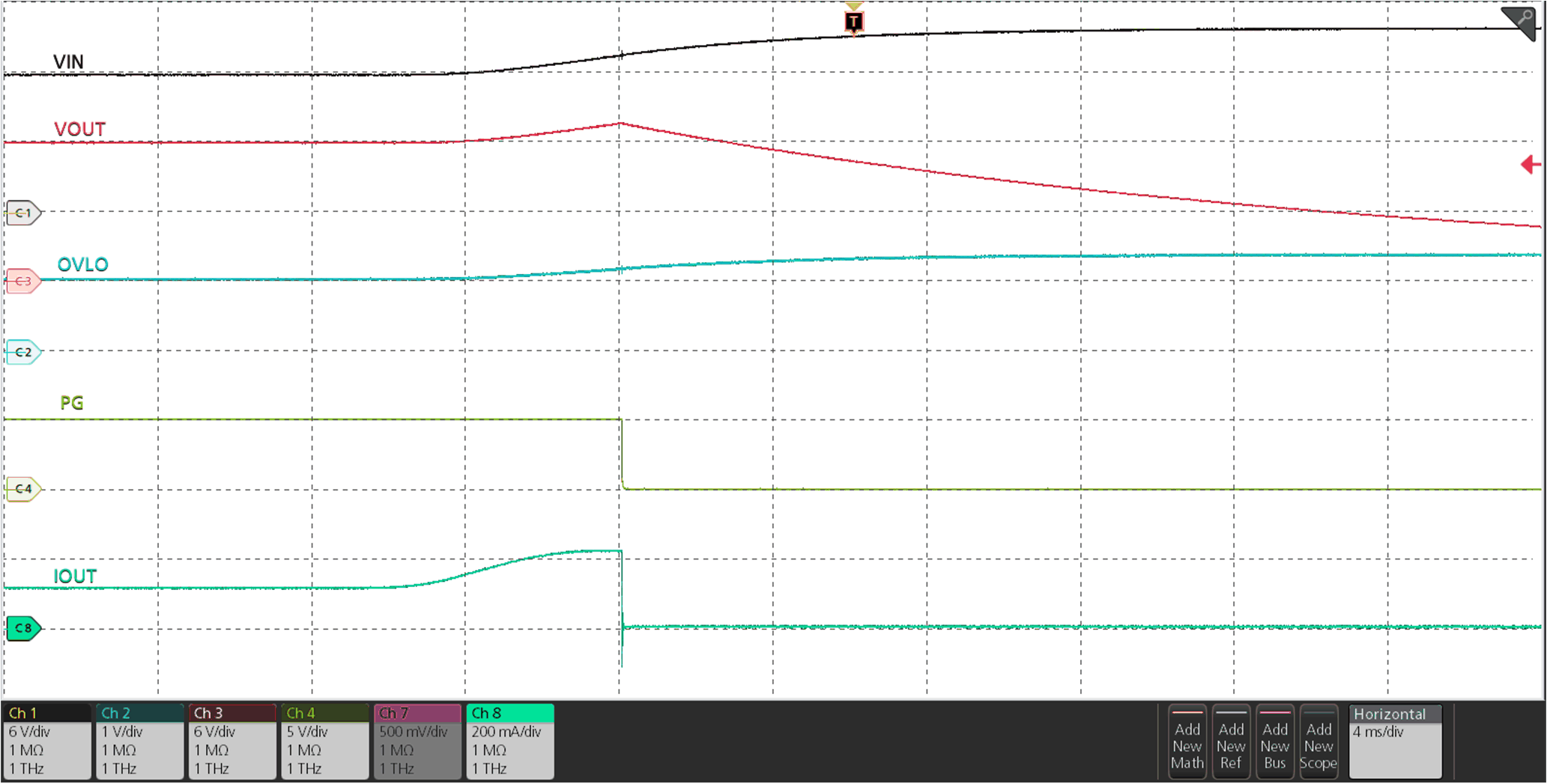
| VIN Overvoltage threshold set to 13.6 V using resistor ladder connected to OVLO pin, VIN ramped up from 12 V to 16 V |
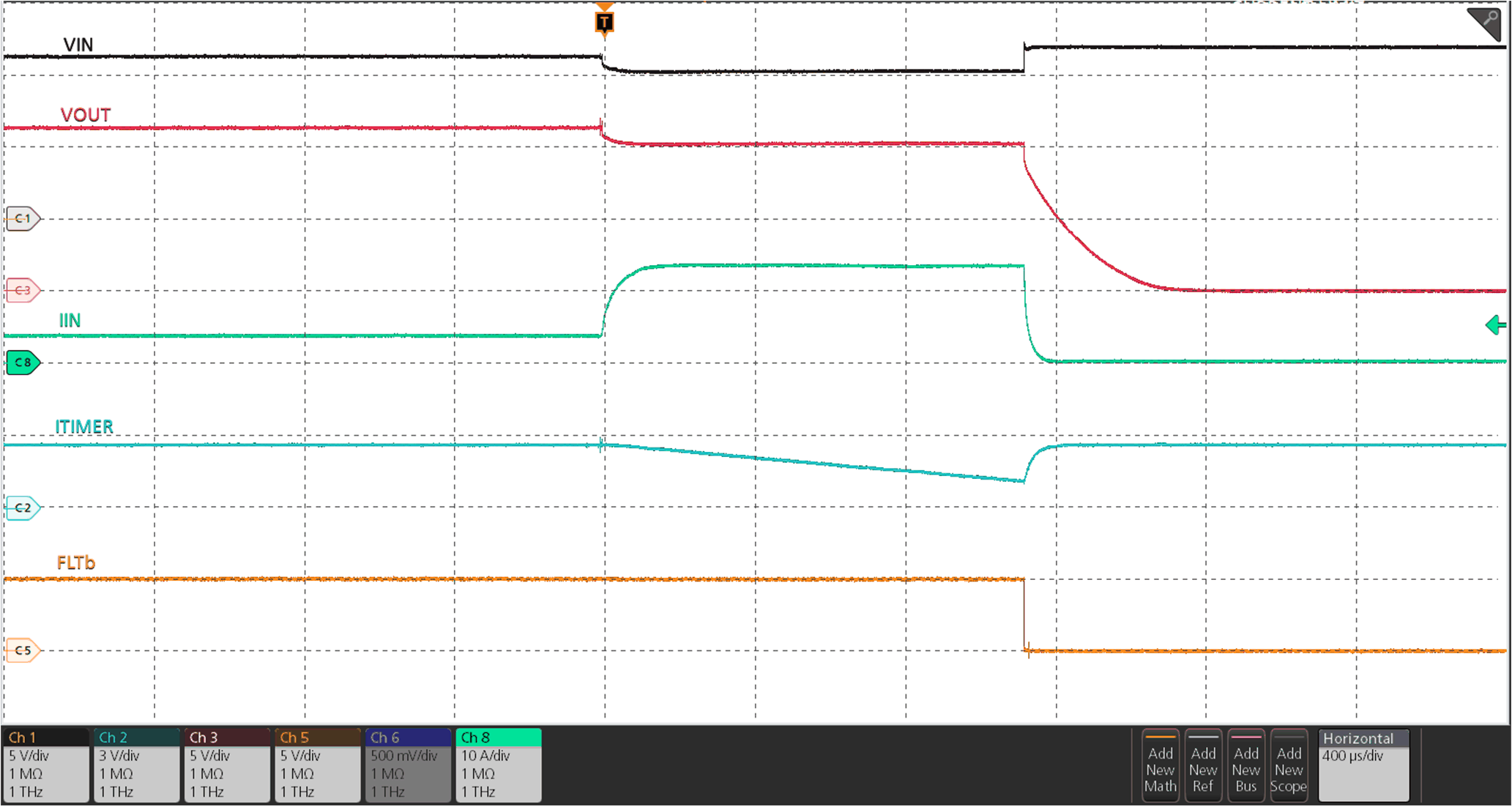
| VIN = 12 V, CITIMER = 1.5 nF, RILM = 649 Ω, IOUT ramped from 4 A → 13 A |
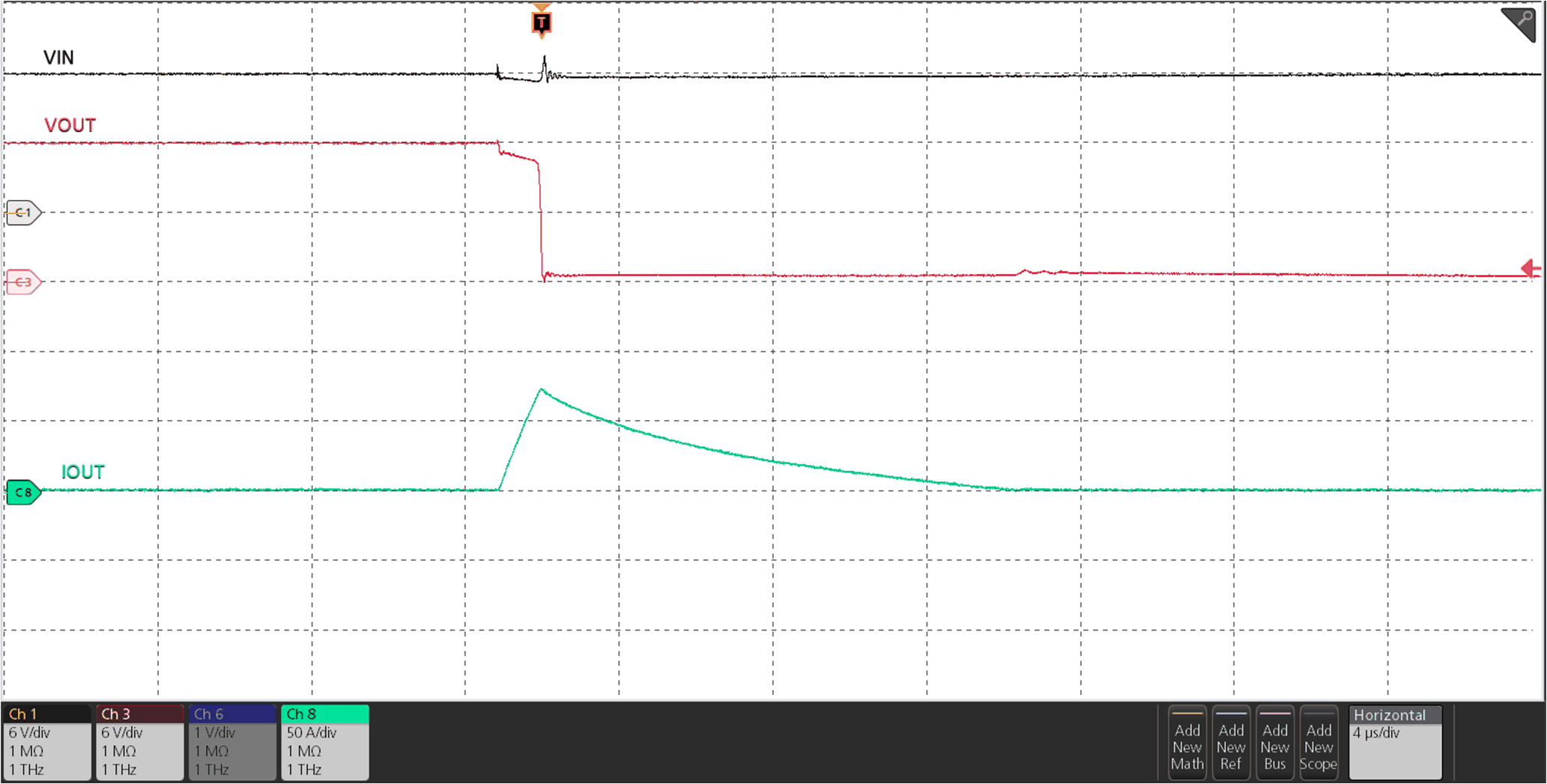
| VIN = 12 V, RILM = 649 Ω, OUT stepped from Open → Short-circuit to GND |